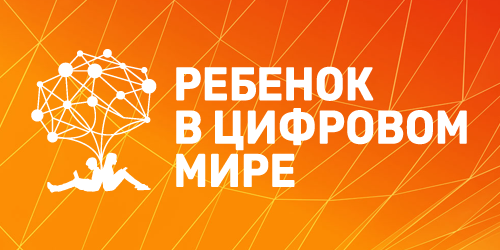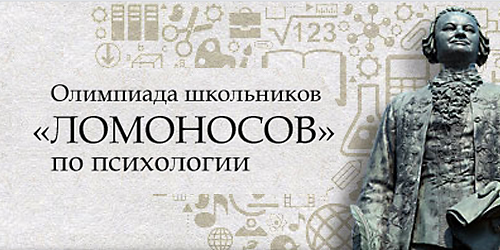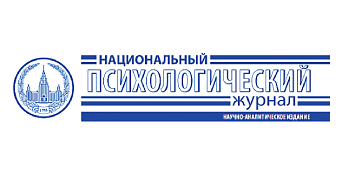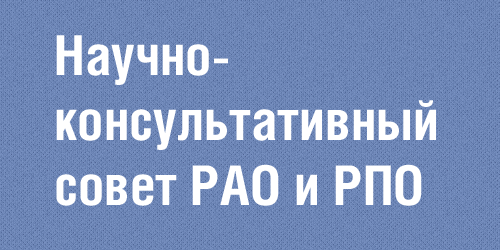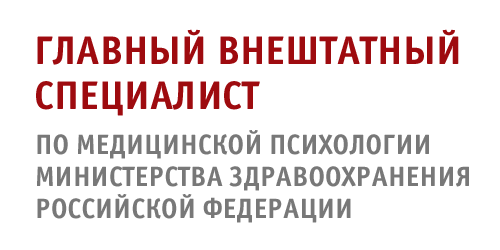Субъективная составляющая состояния покоя: обзор методик исследования
Аннотация
Актуальность. В последние годы все чаще предметом исследования становится состояние покоя, в котором субъект находится при отсутствии явных внешних сенсорных стимулов и когнитивных задач. Интерес к изучению субъективной составляющей спокойного бодрствования возрос после появления исследований с использованием нейровизуализации, свидетельствующих о существовании церебральной сети, повышающей свою активность в состоянии покоя. Отмечается разнообразие методических подходов к оценке содержания потока мыслей в условиях спокойного бодрствования. Актуальной остается проблема создания универсального инструмента фиксации субъективной составляющей состояния покоя.
Цель. Провести анализ существующих методических подходов к изучению субъективной составляющей состояния покоя.
Методы. Обзор и анализ имеющихся исследований содержания потока мыслей в условиях состояния спокойного бодрствования.
Результаты. Представлен анализ методических подходов, используемых при исследовании свободного потока сознания в состоянии спокойного бодрствования, таких как анкеты и опросники, структурированная беседа, отчеты о текущем состоянии в момент случайного сигнала.
Выводы. Проведенный литературный обзор продемонстрировал методическое разнообразие оценки субъективной составляющей состояния покоя, а также показал необходимость учитывать разные факторы, влияющие на достоверность получаемых результатов. Обсуждается необходимость использования взаимодополняющих методик при решении конкретных задач исследований, а также возможность разработки качественного универсального диагностического инструмента для анализа контента потока сознания в состоянии покоя.
Литература
Буккиева Т.А. и др. Функциональная МРТ покоя. Общие вопросы и клиническое применение // Российский электронный журнал лучевой диагностики. 2019. Т. 9, № 2. С. 150–170.
Бычкова А.С., Каверина М.Ю., Ениколопова Е.В., Кроткова О.А. Содержание спонтанного потока сознания в состоянии покоя при мягкой компрессии одного из полушарий мозга // Вопросы психологии. 2021. Т. 67, № 3. C. 162–170.
Кулева А.Ю. и др. Особенности функциональной коннективности головного мозга в состоянии покоя у пациентов с латерализованным поражением медиобазальных отделов височной доли (данные фМРТ и ЭЭГ) // Журнал высшей нервной деятельности им. И.П. Павлова. 2022. Т. 72, № 2. С. 187–200.
Мартынова О.В., Сушинская-Тетерева А.О., Балаев В.В., Иваницкий А.М. Корреляция функциональной связности областей мозга, активных в состоянии покоя, с поведенческими и психологическими показателями // Журнал высшей нервной деятельности. 2016. Т. 66, № 5. С. 541–555.
Сварник О.Е. Воспроизведение специфических последовательностей активности нейронов в мозге и его значение для когнитивных процессов // Экспериментальная психология. 2022. Т. 15, № 1. C. 33–55.
Фекличева И.В. и др. Взаимосвязь интеллекта и функциональной связанности мозга в состоянии покоя // Теоретическая и экспериментальная психология. 2020. Т. 13, № 3. C. 65–78.
Arun, K.M., Smitha, K.A., Sylaja, P.N., Kesavadas, C. (2020). Identifying resting-state functional connectivity changes in the motor cortex using fNIRS during recovery from stroke. Brain Topography, 33 (6), 710–719.
Baird, B., Smallwood, J., Schooler, J.W. (2011). Back to the future: Autobiographical planning and the functionality of mind-wandering. Consciousness and Cognition, 20 (4), 1604–1611.
Biswal, B., Yetkin, F.Z., Haughton, V.M., Hyde, J.S. (1995). Functional connectivity in the motor cortex of resting human brain using echo-planar MRI. Magnetic Resonance in Medicine, 34, 537–541.
Cecchetto, C., Fischmeister, F.P.S., Reichert, J.L., Bagga, D., Schöpf, V. (2019). When to collect resting-state data: the influence of odor on post-task resting-state connectivity. NeuroImage, 191, 361–366.
Chaieb, L., Hoppe, C., Fell, J. (2021). Mind wandering and depression: a status report. Neuroscience and biobehavioral reviews, 133, 104505. doi: 10.1016/j.neubiorev.2021.12.028
Chenot, Q., Lepron, E., De Boissezon, X., Scannella, S. (2021). Functional Connectivity Within the Fronto-Parietal Network Predicts Complex Task Performance: A fNIRS Study. Frontiers in Neuroergonomics, 2, 1–14.
Delamillieure, P. et al. (2010). The resting state questionnaire: An introspective questionnaire for evaluation of inner experience during the conscious resting state. Brain research bulletin, 81 (6), 565–573.
De Witte, N.A. et al. (2021). Human Factors in Living Lab Research. Technology Innovation Management Review, 11 (9/10), 21–29.
Diaz, B.A. et al. (2014). The ARSQ 2.0 reveals age and personality effects on mind-wandering experiences. Frontiers in psychology, 5, 271–279.
Diaz, B.A. et al. (2013). The Amsterdam Resting-State Questionnaire reveals multiple phenotypes of resting-state cognition. Frontiers in human neuroscience, 7, 446–461.
Esposito, R. et al. (2018). Modifications in resting state functional anticorrelation between default mode network and dorsal attention network: comparison among young adults, healthy elders and mild cognitive impairment patients. Brain imaging and behavior, 12 (1), 127–141.
Feurer, C. et al. (2021). Resting state functional connectivity correlates of rumination and worry in internalizing psychopathologies. Depression and Anxiety, 38 (5), 488–497.
Finn, E.S. (2021). Is it time to put rest to rest? Trends in cognitive sciences, 25 (12), 1021–1032.
Gardner, B. et al. (2020). How do people interpret and respond to self-report sitting time questionnaires? a think-aloud study. Psychology of Sport and Exercise, 50, 101718.
Gonzalez-Castillo, J. et al. (2019). Imaging the spontaneous flow of thought: Distinct periods of cognition contribute to dynamic functional connectivity during rest. NeuroImage, 202, 116129.
Gonzalez-Castillo, J., Kam, J.W., Hoy, C.W., Bandettini, P.A. (2021). How to interpret resting-state fMRI: ask your participants. Journal of Neuroscience, 41 (6), 1130–1141.
Gorgolewski, K.J. et al. (2014). A correspondence between individual differences in the brain’s intrinsic functional architecture and the content and form of self-generated thoughts. PloS One, 9 (5), e97176.
Gruber, J., Johnson, S.L., Oveis, C., Keltner, D. (2008). Risk for mania and positive emotional responding: too much of a good thing? Emotion, 8 (1), 23–33.
He, H., Hu, L., Zhang, X., Qiu, J. (2021). Pleasantness of mind wandering is positively associated with focus back effort in daily life: Evidence from resting state fMRI. Brain and Cognition, 150, 105731–105745.
Heavey, C.L. et al. (2019). Measuring the frequency of inner-experience characteristics by self-report: The Nevada Inner Experience Questionnaire. Frontiers in Psychology, 9, 2615–2630.
Hurlburt, R.T., Alderson-Day, B., Kühn, S., Fernyhough, C. (2016). Exploring the ecological validity of thinking on demand: neural correlates of elicited vs. spontaneously occurring inner speech. PLoS One, 11 (2), e0147932.
Hurlburt, R.T., Heavey, C.L. (2006). Exploring inner experience: The Descriptive experience sampling method. Amsterdam: John Benjamins Publishing Company.
Hurlburt, R.T. et al. (2022). Measuring the Frequency of Inner-Experience Characteristics. Perspectives on Psychological Science, 17 (2), 559–571.
James, W. (1890). The principles of psychology: in 2 vol. New-York: Holt.
Karapanagiotidis, T., Vidaurre, D. et al. (2020). The psychological correlates of distinct neural states occurring during wakeful rest. Scientific reports, 10 (1), 1–11.
Kawagoe, T., Onoda, K., Yamaguchi, S. (2019). The neural correlates of «mind blanking»: When the mind goes away. Human brain mapping, 40 (17), 4934–4940.
Klinger, E. (1978). Modes of normal conscious flow. In K.S. Pope, J.L. Singer (Eds.), The Stream of Consciousness (pp. 225–258). New York: Plenum.
Koculak, M., Wierzchoń, M. (2022). Consciousness Science Needs Some Rest: How to Use Resting-State Paradigm to Improve Theories and Measures of Consciousness. Frontiers in Neuroscience, 16, 836758–836762.
Kvavilashvili, L., Rummel, J. (2020). On the nature of everyday prospection: A review and theoretical integration of research on mind-wandering, future thinking, and prospective memory. Review of General Psychology, 24 (3), 210–237.
Li, H.X., Lu, B., Chen, X. et al. (2021). Exploring self-generated thoughts in a resting state with natural language processing. Behavior Research Methods, 54 (4), 1725–1743.
Liu, D., Chen, Q., Shi, B., Qiu, J. (2019). The brain mechanism of mind popping based on resting-state functional connectivity. Neuroreport, 30 (11), 790–794.
Malagurski, B., Liem, F., Oschwald, J., Mérillat, S., Jäncke, L. (2020). Functional dedifferentiation of associative resting state networks in older adults–a longitudinal study. NeuroImage, 214, 116680–116698.
Marek, S., Tervo-Clemmens, B. et al. (2020). Towards reproducible brain-wide association studies. BioRxiv, 257758.
Matthews, G., Joyner, L., Gilliland, K., Campbell, S., Falconer, S., Huggins, J. (1999). Validation of a comprehensive stress state questionnaire: Towards a state big three. Personality psychology in Europe, 7, 335–350.
Mildner, J.N., Tamir, D.I. (2019). Spontaneous thought as an unconstrained memory process. Trends in neurosciences, 42 (11), 763–777.
Murray, S., Krasich, K., Schooler, J.W., Seli, P. (2020). What’s in a task? Complications in the study of the task-unrelated-thought variety of mind wandering. Perspectives on Psychological Science, 15 (3), 572–588.
Pope, K.S. (1978). How gender, solitude, and posture influence the stream of consciousness. In K.S. Pope, J.L. Singer (Eds.), The Stream of Consciousness (pp. 259–299). New York: Plenum.
Portnova, G.V., Tetereva, A.O., Ivanitsky, A.M., Martynova, O.V., Liaukovich, K.M. (2020). The Effect of Experimental Conditions, the Sample Size and Session Duration on Resting-State Subjective Experience. Psychology, 17 (3), 592–607.
Portnova, G.V., Ukraintseva, Y.V., Liaukovich, K.M., Martynova, O.V. (2019). Association of the retrospective self-report ratings with the dynamics of EEG. Heliyon, 5 (10), e02533.
Raffaelli, Q. et al. (2021). The think aloud paradigm reveals differences in the content, dynamics and conceptual scope of resting state thought in trait brooding. Scientific reports, 11 (1), 1–14.
Roebuck, H., Lupyan, G. (2020). The internal representations questionnaire: Measuring modes of thinking. Behavior Research Methods, 52 (5), 2053–2070.
Sato, W., Kochiyama, T. et al. (2019). Resting-state neural activity and connectivity associated with subjective happiness. Scientific reports, 9 (1), 1–10.
Simons, J.S., Ritchey, M., Fernyhough, C. (2022). Brain mechanisms underlying the subjective experience of remembering. Annual Review of Psychology, 73, 159–186.
Smallwood, J., O’Connor, R.C. (2011). Imprisoned by the past: unhappy moods lead to a retrospective bias to mind wandering. Cognition & emotion, 25 (8), 1481–1490.
Song, H., Rosenberg, M.D. (2021). Predicting attention across time and contexts with functional brain connectivity. Current Opinion in Behavioral Sciences, 40, 33–44.
Stoffers, D. et al. (2015). Resting-state fMRI functional connectivity is associated with sleepiness, imagery, and discontinuity of mind. PloS One, 10 (11), e0142014.
Theodoros, K. et al. (2020). The psychological correlates of distinct neural states occurring during wakeful rest. Scientific Reports, 10 (1), 1–11.
Tourangeau, R. (1999). Remembering what happened: Memory errors and survey reports. In A.A. Stone, C.A. Bachrach, J.B. Jobe, H.S. Kurtzman, V.S. Cain (Eds.)., The science of self-report (pp. 41–60). New York: Psychology Press.
Van Calster, L. et al. (2017). Fluctuations of attentional networks and default mode network during the resting state reflect variations in cognitive states: evidence from a novel resting-state experience sampling method. Journal of Cognitive Neuroscience, 29 (1), 95–113.
Van Son, D. et al. (2019). Electroencephalography theta/beta ratio covaries with mind wandering and functional connectivity in the executive control network. Annals of the New York Academy of Sciences, 1452 (1), 52–64.
Webb, C.A., Tierney, A.O., Brown, H.A., Forbes, E.E., Pizzagalli, D.A., Ren, B. (2022). Spontaneous thought characteristics are differentially related to heightened negative affect versus blunted positive affect in adolescents: An experience sampling study. JCPP Advances, 2 (4), e12110.
Zanesco, A.P., Denkova, E., Jha, A.P. (2021). Associations between self-reported spontaneous thought and temporal sequences of EEG microstates. Brain and cognition, 150, 105696–105715.
Zeng, C. et al. (2021). Abnormal Large-Scale Network Activation Present in Bipolar Mania and Bipolar Depression Under Resting State. Frontiers in psychiatry, 12, 634299.
Zhang, Y., Zhu, C. (2020). Assessing brain networks by resting-state dynamic functional connectivity: An fNIRS-EEG study. Frontiers in neuroscience, 13, 1430–1445.
Поступила: 24.08.2022
Принята к публикации: 30.10.2022
Дата публикации в журнале: 10.03.2023
Ключевые слова: состояние покоя; сеть пассивного режима работы мозга (СПРРМ); спонтанный поток сознания; опросник состояния покоя
DOI: 10.11621/vsp.2023.01.09
Бычкова, А.С., Кроткова, О.А., Ениколопова, Е.В. (2023). Субъективная составляющая состояния покоя: обзор методик исследования. Вестник Московского университета. Серия 14. Психология, 46(1), 201-220. https://doi.org/10.11621/vsp.2023.01.09
скопировано

Это произведение доступно по лицензии Creative Commons «Attribution-NonCommercial» («Атрибуция-Некоммерчески») 4.0 Всемирная





